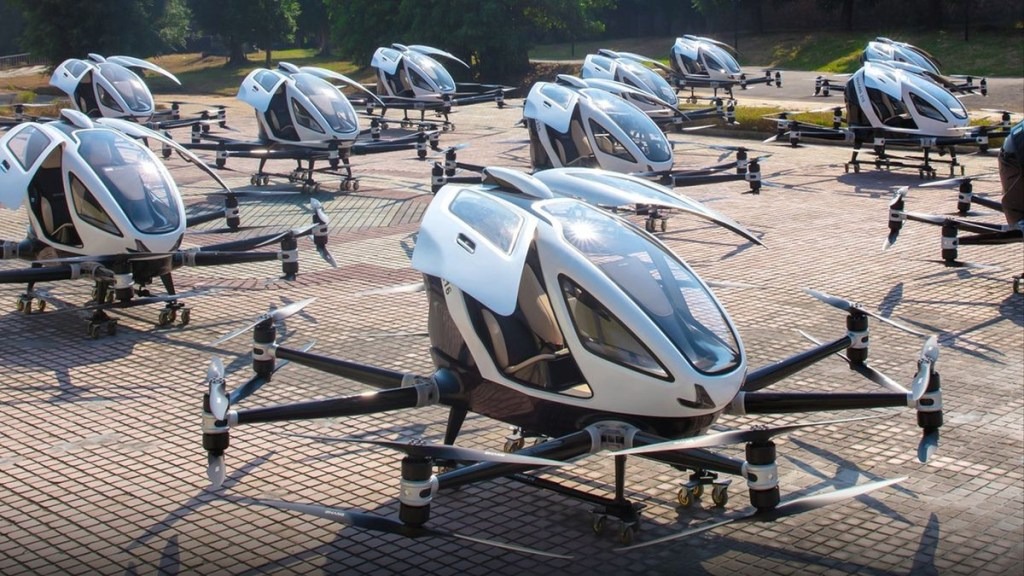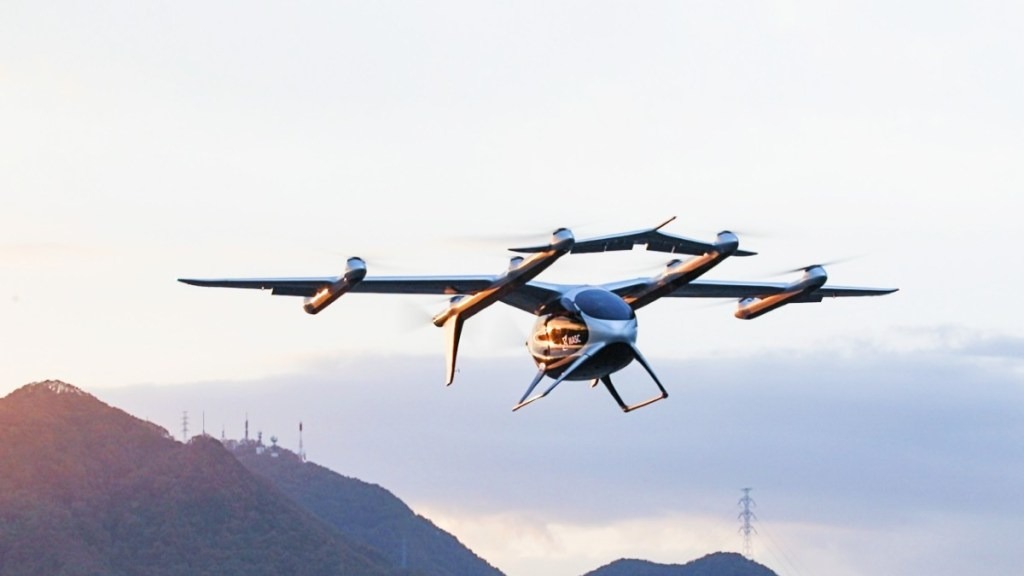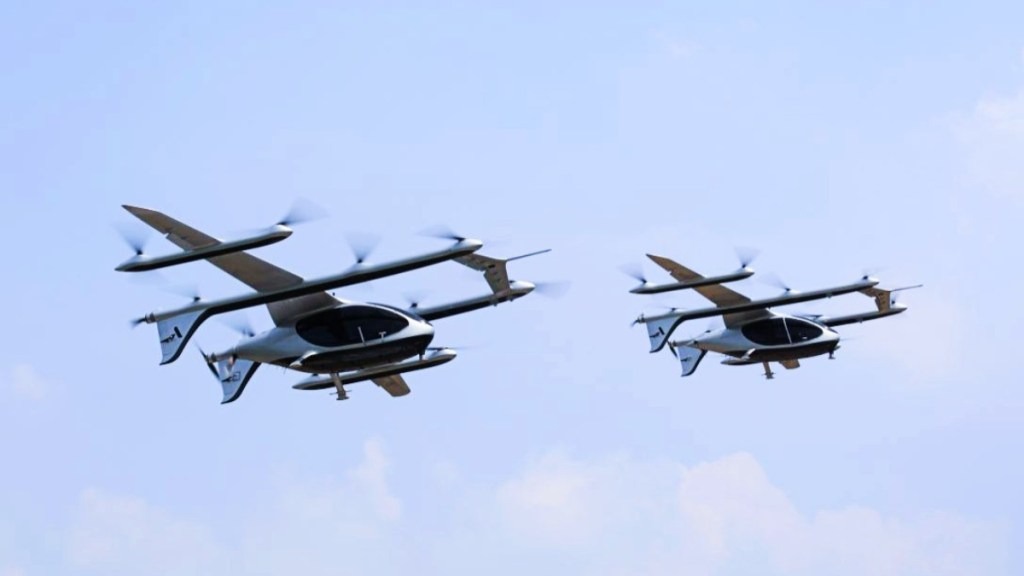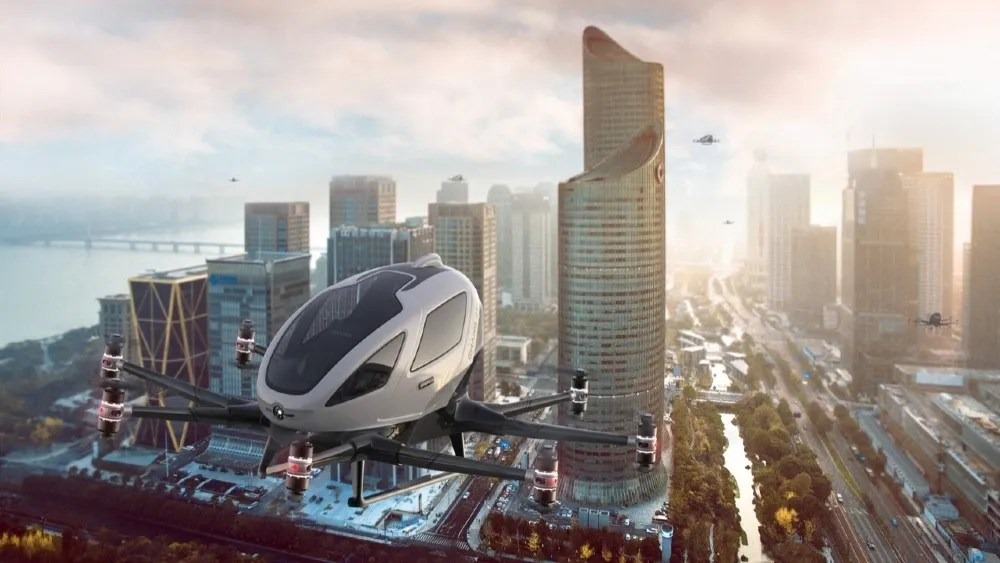China is setting its sights on dominating the electric flying car market, much like its success with electric vehicles. A Chinese trade organization predicts that by 2030, the nation will have over 100,000 autonomous drones, flying cars, and electric air taxis navigating its urban skies. This ambitious vision is part of China’s broader strategy to foster a “low-altitude economy,” a term coined by government officials. Furthermore, China aims to position itself as a leading provider of electric vertical takeoff and landing (eVTOL) aircraft in developing countries across Asia and advanced economies like Japan.

Achieving this vision will require substantial development of production facilities and infrastructure, but significant progress is already being made across Asia. Last week, Chinese eVTOL manufacturer AutoFlight conducted its first test flight in Japan in collaboration with the aerospace nonprofit MASC. The test featured the five-seat Prosperity eVTOL aircraft, marking the beginning of a broader plan to integrate electric air travel with underserved coastal regions in Japan.
The test flight successfully demonstrated the aircraft’s potential and paved the way for further trials across multiple Japanese cities to promote advanced air mobility adoption. Earlier in 2024, AutoFlight completed cross-sea flights in China’s Pearl River Delta and set a record-breaking 155.5-mile flight, surpassing its U.S. competitor, Joby. AutoFlight has also sold its first Prosperity unit outside China to a Japanese customer, who plans to showcase it at the World Expo in Osaka.
AutoFlight’s progress reflects the rapid growth of China’s eVTOL industry. In March, the company became the second Chinese eVTOL maker to receive an airworthiness certificate from the Civil Aviation Administration of China (CAAC) for its CarryAll model, a non-crewed transport aircraft weighing over a ton. Certification for the Prosperity model is expected within three to five years, first in China and then in Europe through EASA, the European Union’s aviation regulator.

Another prominent Chinese manufacturer, EHang, has made significant strides with its electric aircraft. The company completed a 16-city tour in Japan and expanded its presence across Southeast Asia and the Middle East. EHang’s EH216-S eVTOL, a two-person, non-crewed aircraft, received type certification from the CAAC in October 2023. The company has already sold over 300 units, shipping 63 in the latest quarter alone. Its primary production facility is located in Yunfu, China, with another under development in Abu Dhabi. EHang views the United Arab Emirates and Saudi Arabia as promising early adopter markets for its eVTOL technology.
Volant Aerotech, another Chinese eVTOL manufacturer, reports preorders exceeding 700 units within China. Meanwhile, Xpeng Aeroht, an offshoot of the EV maker Xpeng, has begun constructing a manufacturing site for flying cars, aiming for mass production by 2026. The rapid emergence of over 30 eVTOL startups in China underscores the industry’s momentum, supported by the government’s focus on developing the low-altitude economy as a strategic growth area.
China’s Premier Li Qiang highlighted the importance of this sector in a state address, describing it as a “strategic emerging industry.” A recent report from the China Low Altitude Economic Alliance projects that by 2030, the nation could have 100,000 long-range drones and eVTOLs serving as cargo carriers, personal flying cars, or air taxis. These long-range drones, capable of transporting cargo at altitudes around 3,000 feet for distances of up to 1,000 miles, are expected to dominate air traffic.

Beyond private and cargo applications, eVTOLs are envisioned to support medical services and other essential transportation needs. AutoFlight’s recent demonstration in Japan exemplifies the technology’s potential. The company aims to connect three Japanese islands—Honshu, Shikoku, and Kyushu—in the country’s inland sea, where aging infrastructure and limited transport options present significant challenges. This initiative is part of Japan’s SCAI28 program, which seeks to implement air mobility solutions by 2028.
Despite the ambitious targets, significant challenges remain. While China is the first nation to prioritize eVTOLs as a key growth industry, achieving the goal of 100,000 flying electric vehicles by 2030 will require substantial state investments, streamlined regulations, and innovative business models. Luo Jun, executive director of the China Low Altitude Economic Alliance, acknowledged the uncertainties, noting that there are no established business models for the low-altitude economy to emulate internationally. To address this, the alliance plans to provide detailed guidelines to help cities develop viable commercial strategies.
China’s focus on the eVTOL market reflects a broader vision to innovate and expand its economic horizons. With state support and an expanding ecosystem of manufacturers, the country is poised to become a leader in electric air mobility, reshaping urban transport and extending its technological influence globally.



